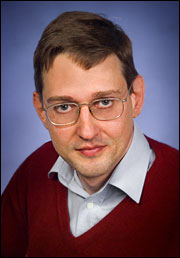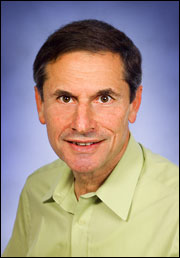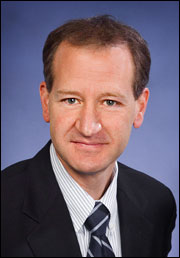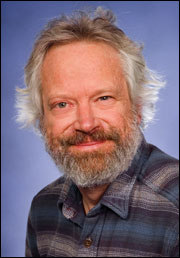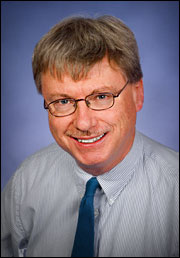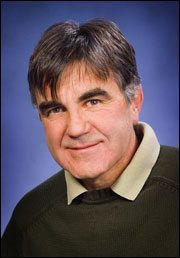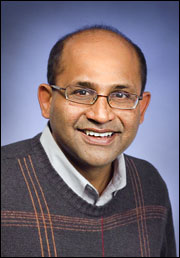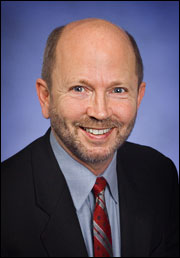Seven Brookhaven Lab Scientists Named American Physical Society Fellows
Brookhaven Lab Historian Also Named an APS Fellow
December 21, 2007
UPTON, NY - Seven scientists at the U.S. Department of Energy's Brookhaven National Laboratory and the Laboratory historian have been named Fellows of the American Physical Society, a professional organization with more than 45,000 members. Election to APS Fellowship is limited to no more than one half of one percent of its membership in a given year, and election for this honor indicates recognition by scientific peers for outstanding contributions to physics.
The new 2007 Fellows from Brookhaven are:
Wolfram Fischer
"For the successful commissioning of high luminosity, high energy collisions at the Relativistic Heavy Ion Collider [RHIC] and outstanding contributions to the understanding of high-energy accelerator and collider properties."
An expert in beam dynamics problems of high energy colliders, Fischer worked on the commissioning and continuous performance improvements of RHIC, Brookhaven's world-class accelerator at which physicists detected a "perfect" liquid thought to have existed at the beginning of the universe.
After earning a Ph.D. from the University of Hamburg, Germany, in 1995, Fischer became a research collaborator at Brookhaven Lab in the same year, and he joined the Brookhaven staff in 1998. He is currently Deputy Head of the Accelerator Division in Brookhaven's Collider-Accelerator Department.
Ady Hershcovitch
"For inventing and developing original plasma devices, as well as improving existing devices for applications in research and industry that led to new technologies and new physics."
Hershcovitch developed a plasma window, a novel device that has several industrial and scientific applications, including electron-beam welding and transmitting beams of particles and radiation from vacuum to atmosphere for experiments in the U.S., Israel and South Africa. Acceleron Inc., of East Grandy, Connecticut, holds an exclusive license for the technology. Earlier in his career, Hershcovitch developed an ion probe, a diagnostic device that measures the temperature and density of ions in plasma physics experiments and in tokamak fusion reactors, which hold the promise of producing fusion energy, like the energy that powers the sun. In 1996 and 1987, respectively, Hershcovitch won R&D 100 Awards for these inventions from R&D Magazine, which annually honors inventors for the top 100 technological achievements of the year.
Hershcovitch earned a Sc.D. from the Massachusetts Institute of Technology in 1977, and he joined Brookhaven in 1980. He is also a research professor at Southern Methodist University in Dallas, Texas, and is directing plasma-related projects at the University of California at Irvine, the Institute for Theoretical and Experimental Physics in Moscow, Russia, and the High Current Electronics Institute in Tomsk, Russia.
Christopher Homes
"For seminal contributions to the development of infrared spectroscopy, and its application to strongly correlated systems."
Homes developed instrumentation for infrared spectroscopy - the use of infrared light to probe the electrical properties of a material - that vastly improved the accuracy of data collected from small samples. Homes applied this new technique to strongly correlated systems, materials in which particles that carry an electric charge interact strongly with each other. These materials, which include high-temperature superconductors, tend to display exotic behavior.
Homes received his Ph.D. from the University of British Columbia, Canada, in 1990, and he joined Brookhaven Lab in 1996. Homes was the recipient of the Natural Sciences and Engineering Research Council of Canada Postdoctoral Fellowship in 1992 and the Brookhaven Science and Technology Award in 2007.
Steven Kettell
"For his leadership in rare kaon decay experiments."
Kettell has been studying rare kaon decays at Brookhaven's Alternating Gradient Synchrotron since 1989. The kaon is an unstable particle that can decay, or break apart, in a variety of ways. Kettell has focused on searches for decay modes that are forbidden or very highly suppressed in the Standard Model, a particle physics theory that has withstood the test of more than 30 years of experimentation.
Kettell earned his Ph.D. from Yale University in 1990. He first came to Brookhaven in 1989 as a research associate for Temple University and joined Brookhaven staff in 1992. He is currently the group leader of Brookhaven's Electronic Detector Group. He is also chief scientist of the U.S. Daya Bay Project, a neutrino experiment in China.
Edward O'Brien
"For leadership in the construction, operation and continuous improvement of the PHENIX detector since the start of RHIC, notably for the successful implementation of significant annual upgrades of the detector as part of a systematic program to extend its physics research."
PHENIX, a 3.5 kiloton device as big as a three-story building, is a detector at Brookhaven's RHIC. One of the largest nuclear physics experiments in the world, PHENIX is used by over 500 scientists from 68 institutions in 14 countries to study properties of matter at temperatures of 12-trillion degrees C. - a temperature that last existed when the universe was only one millionth of a second old - to understand the nuclear strong force, which binds together quarks and gluons in the atomic nucleus.
O'Brien earned his Ph.D. from the University of Illinois, Urbana, in 1987, and he started working at Brookhaven in the same year. He has been a member of the PHENIX experiment since 1992 and is currently the director of operations of PHENIX.
DeJan Trbojevic
"For his original contributions in the design, commissioning and operations of Tevatron and RHIC colliders and for the development of new concepts for future accelerators."
Trbojevic designed part of the main ring around the large particle detector at DOE's Fermi National Laboratory (Fermilab) in Batavia, Illinois. He also developed a new method of particle acceleration for high-energy accelerators that eliminates problems associated with transition energy - the energy at which particle motion is unstable - and a new type of accelerator with small magnets that is relatively easy to operate. The accelerator could be used for muon, proton or electron acceleration as well as cancer therapy. In addition, he was a key figure in the building and commissioning of RHIC.
Trbojevic earned his Ph.D. from Georgetown University in 1984. After working at Fermilab, he came to Brookhaven in 1992.
Raju Venugopalan
"For seminal work elucidating the parton substructure of nucleons and nuclei at low x."
Elementary particles called partons are mostly comprised of gluons with a sprinkling of quarks and anti-quarks, and the gluons multiply rapidly with increasing energy. A theoretical physicist, Venugopalan predicted that "small x gluons," or gluons that carry a very small fraction of a proton's momentum, exist inside nuclei in a highly condensed, glassy state corresponding to the strongest electric and magnetic fields in matter. In a collision of two nuclei, the gluon fields inside the nuclei become unbound to form a "perfect" liquid, known as quark-gluon plasma. Understanding how this occurs is the current theme of Venugopalan's research.
After earning his Ph.D. from Stony Brook University in 1992, Venugopalan worked at several universities in the U.S. and at the Niels Bohr Institute in Copenhagen, Denmark, before joining Brookhaven in 1998. He was a Fellow of the RIKEN-BNL Research Center From 2000 to 2003, and he is currently a senior scientist in the Physics Department. In 2004, he received a U.S. Research Fellow Award from the Humboldt Foundation in Germany.
Robert Crease
For his extensive historical writings on physics, including The Second Creation, Making Physics: A Biography of Brookhaven National Laboratory, and his completion of Robert Serber's memoirs and Abraham Pais's biography of J. Robert Oppenheimer.
Crease has written ten books and numerous articles on the history and philosophy of science, many of them about science at Brookhaven Lab. His book about the Laboratory, Making Physics (University of Chicago Press, 1999), covers the events and people that shaped the Laboratory during its first 25 years. He also has written several historical articles about the Laboratory for the journal Perspectives in Physics. Crease's monthly column, called "Critical Point," is published in the international magazine Physics World.
Crease earned a Ph.D. from Columbia University in 1987 and joined Stony Brook University (SBU) in the same year. In 1989, he began working part-time as the historian for Brookhaven Lab. He is currently Chair of the Philosophy Department at SBU.
2007-10725 | INT/EXT | Newsroom




